Showing 61-80 of 159 results

Sweetpotato and Cover Crops
Waana Kaluwasha discovered some benefits of incorporating cover crops in sweetpotato production.
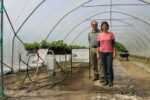
Improving Strawberry Ergonomics
At Tanglewood Farm, Richard Barnes and Kelly St John have been experimenting with elevated cropping systems to reduce labor fatigue and improve fruit quality.

Growing Saffron: Ohio Growers Reveal Key Findings
With support from SARE, growers in Ohio are exploring growing, harvesting, and marketing saffron.
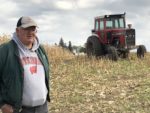
Reducing Runoff with Prairie Strips
Dan Stoffel worked with Sand County Foundation to plant prairie strips on his farm in southeast Wisconsin. With support from a SARE grant, Sand County Foundation was able to work with several producers to implement this practice which helps reduce runoff and attract pollinators.
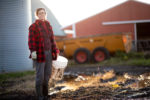
Alleviating and Understanding Farm Stress
Meg Moynihan is working to help agriculture advisors better respond to the stress they encounter on farms and in rural communities.
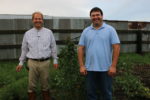
Producing Quinoa in North Dakota
Two North Dakota producers looked at quinoa production and marketing in North Dakota.

Bale Grazing to Build Soil Health
Erin and Drew Gaugler are exploring and documenting the impact of bale grazing on their North Dakota farm. Outreach activities like their "mailbox tour" are helping the siblings share their findings with neighboring producers.
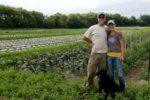
Using Cover Crops to Reduce Plasticulture
Dana and Karin Jokela are working to reduce their use of plasticulture with cover crops.
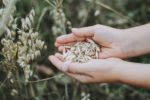
Organic Oat Variety Trial Shares Findings
North Dakota researcher Melanie Caffe-Treml trialed 20 oat varieties under organic management.

Heritage Grains for Craft Brewing
With support from SARE, a Minnesota farmer learned that Conlon barley, Paul hulless oats, and Red Fife wheat could be malted with good flavor for prize-winning beers.

Collaborating Around Food Literacy in Michigan’s Upper Peninsula
Using a model known as land-based learning, students and their teachers collaborated with farmers or ranchers and MSU Extension educators to help implement sustainable, land-based farm solutions in Michigan's upper peninsula.
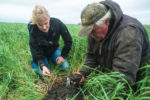
North Dakota Farmers Pursue Soil Stewardship Through Cover Crops
THE CHALLENGE The practice of planting a cover crop holds many opportunities for farmers. Cover crops can build soil health, curb erosion, control weeds, improve water and nutrient management, and increase the bottom line. In North Dakota, they have the potential to reduce soil salinity by using excess water, which is a problem on hundreds […]
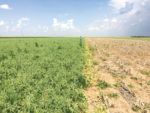
From Fallow to Field Peas
As farmers in western Nebraska face higher cash rents and property taxes, many want a more profitable, sustainable alternative to fallow for crop rotation. Strahinja Stepanovic, a University of Nebraska Lincoln Extension educator, received a SARE grant to find suitable crops for the mix. “Farmers in the semi-arid regions of western Nebraska (14–19 inches of […]
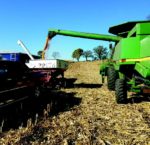
Partnering to Promote Cover Crops in Southeast Wisconsin
Cover crops can improve a farmer’s bottom line in many ways, whether it’s by lowering fertilizer needs, reducing weed and pest pressure, or boosting yields, but as with any investment, there are things to take into consideration when planning. Jim Stute is a farmer in southeast Wisconsin, and a crop and soil researcher with the […]

Using Drone Sensors for Site-Specific Nitrogen Application
From shooting photos from small planes to using a powered parachute with the help of a sport pilot license, Dean Stevens has been taking to the sky to catch a glimpse of his family’s southeast Nebraska farm fields for the better part of 30 years. With recent support from a $15,000 NCR-SARE Farmer Rancher grant, […]
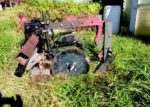
Reducing Tillage in Vegetables Using Cover Crops
When Thomas Ruggieri first planted cover crops on his vegetable farm in rural Missouri in 2004, he noticed improvements in soil fertility and plant health. Ruggieri and Rebecca Graff run Fair Share Farm, a diversified vegetable farm with a 140-member CSA in Kearney, Missouri. Vegetable growers can use cover crops to help reduce erosion, improve soil […]
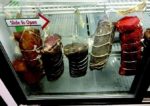
Expanding Local Charcuterie in Northwest Missouri
Watching feed prices go up and pork prices go down can make value-added product lines attractive for a hog producer. Jim Pierce is working on value-added charcuterie products on his farm in Missouri.
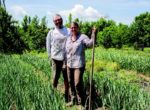
Kansas City Food Hub Strengthens Brand and Marketing
In 2015, a small farm cooperative in the Kansas City area had a dilemma. Fresh Farm HQ (FFHQ) Cooperative Association was helping small and medium-sized farmers access wholesale markets in the Kansas City area, but with more than 18 produce distribution companies already operating in the area, they needed to differentiate themselves; they needed to […]
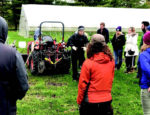
Mechanization Options for Root Crops on Small Farms
On five acres of land in central Michigan, Dru and Adam Montri grow vegetables with seasonal field production and six hoophouses. They sell their Ten Hens Farms produce at the farmers market, to local grocers, area restaurants, and a regional food distributor. They had a problem with root crops, and two other nearby vegetable growers did […]

Urban Farmers Connect with Youth Garden
Integrating agriculture into urban settings is not a new concept, but more and more, the benefits are being realized by communities, policymakers, and food-system entrepreneurs (NCAT-ATTRA 2018). One such entrepreneur is Brent Lubbert, whose nonprofit organization is growing vegetables and future farmers on six plots of land in the Gifford Park Neighborhood of Omaha, Nebraska. […]